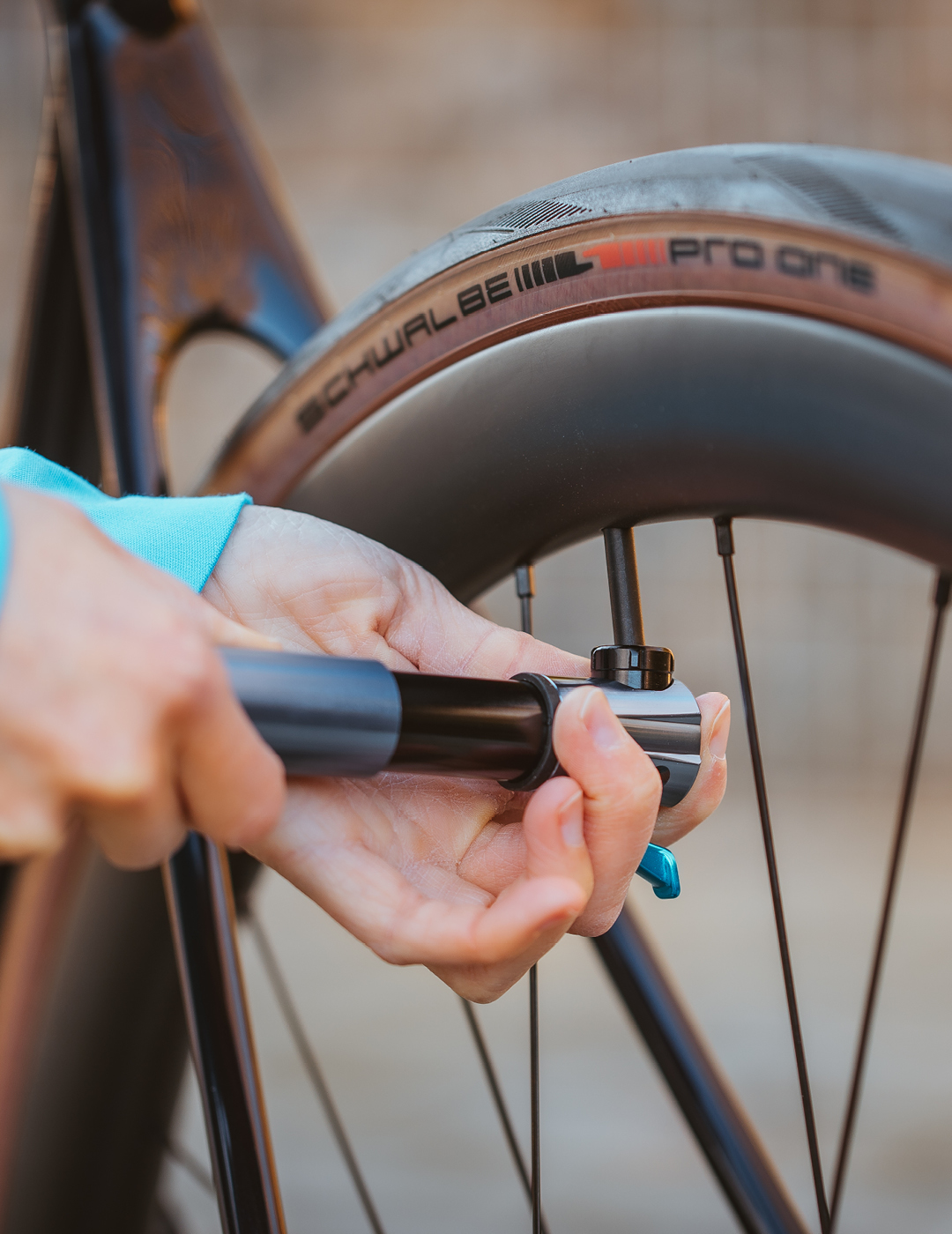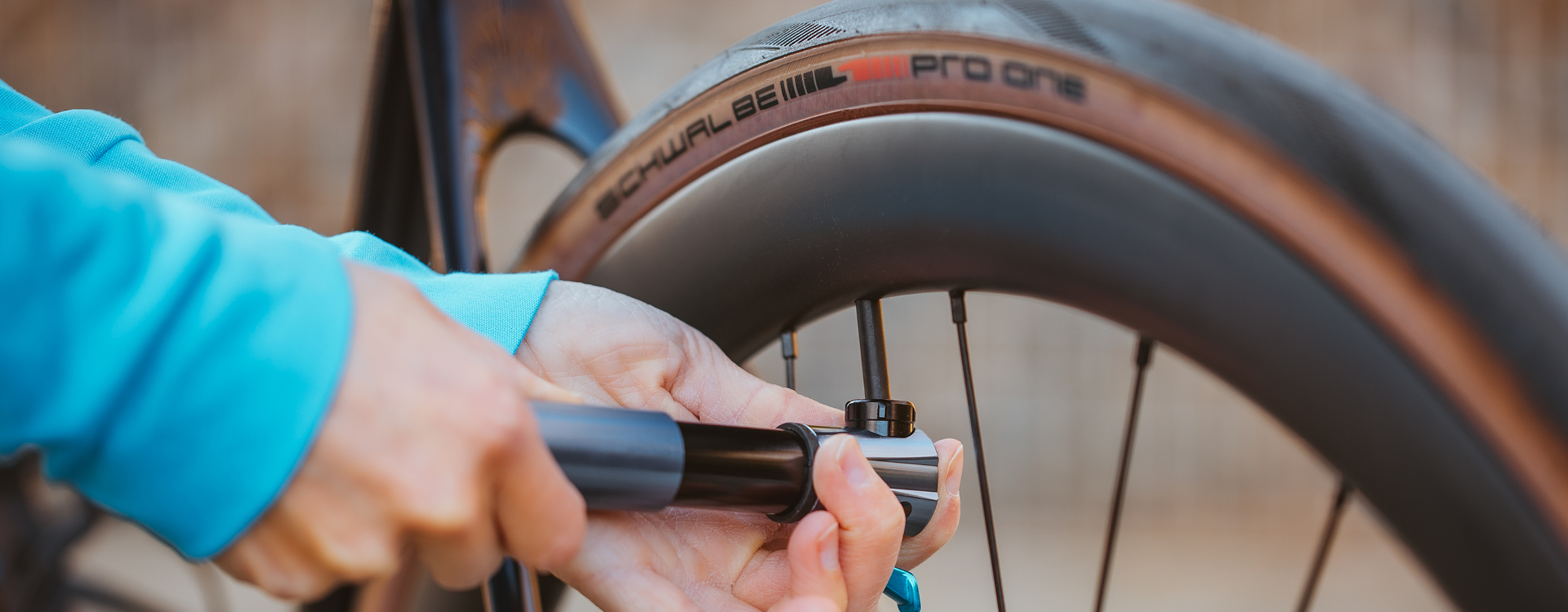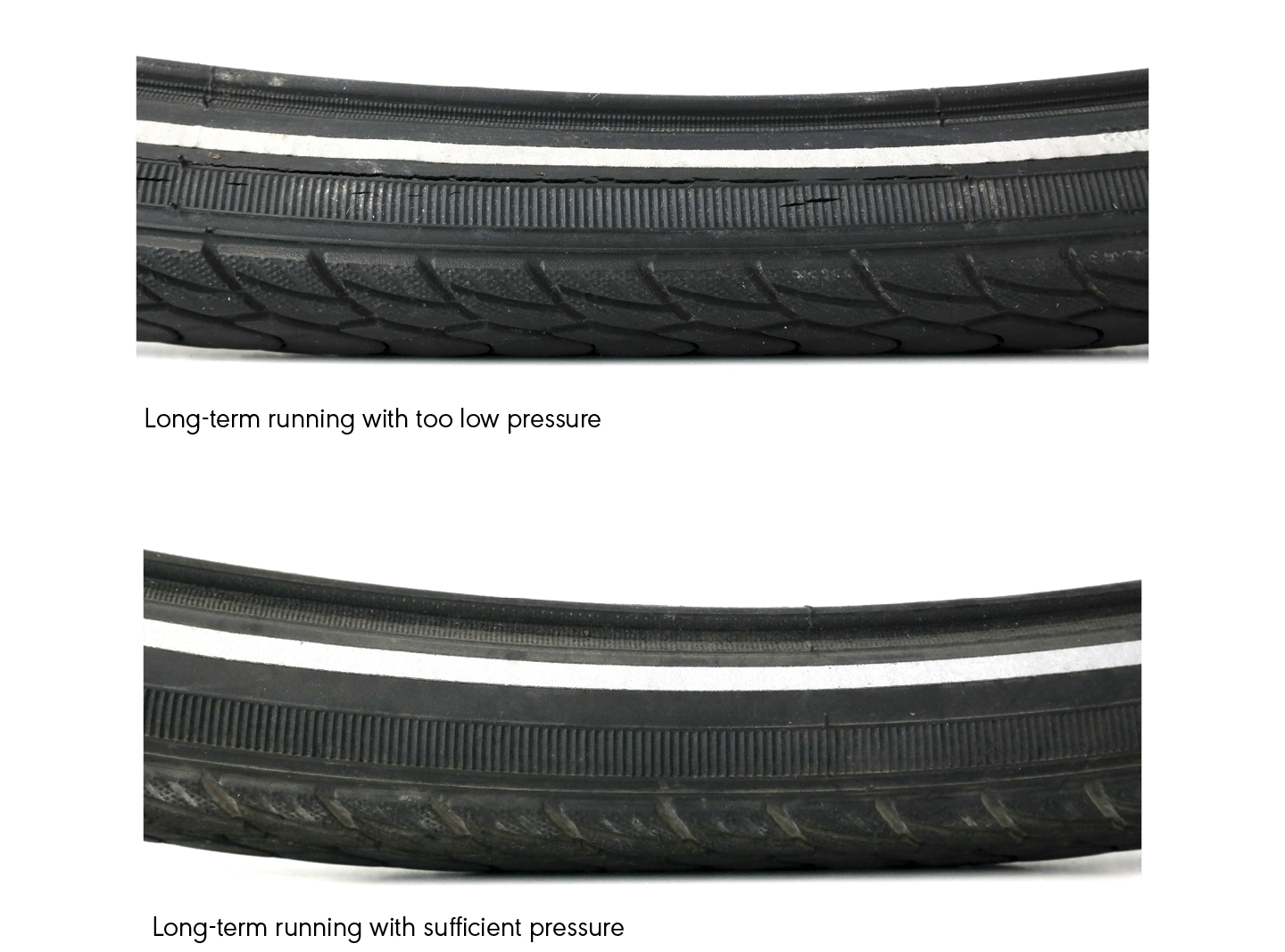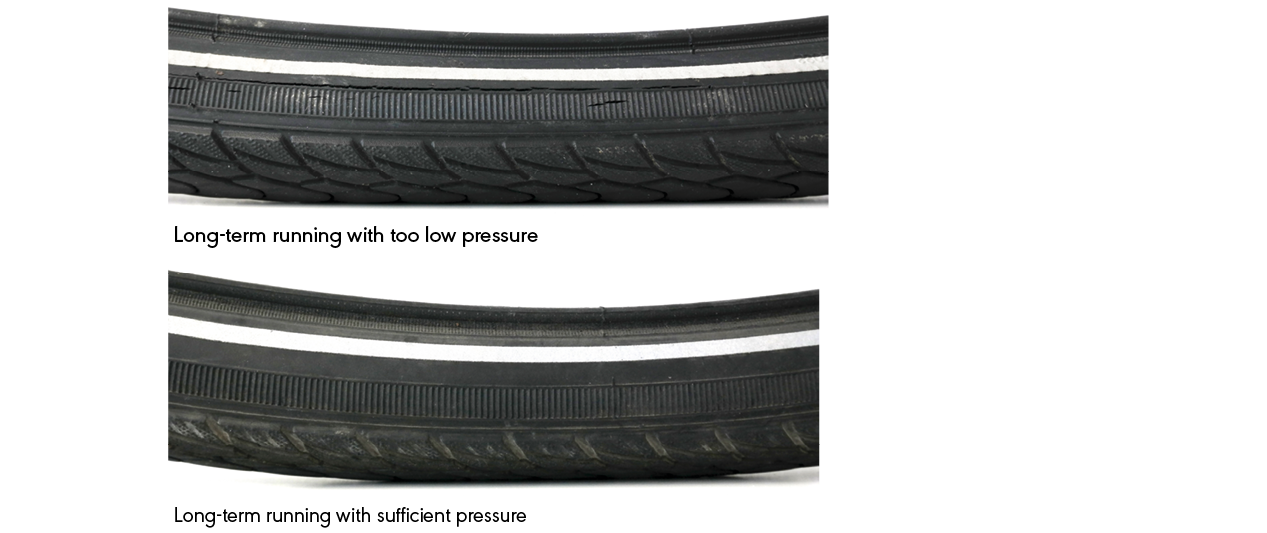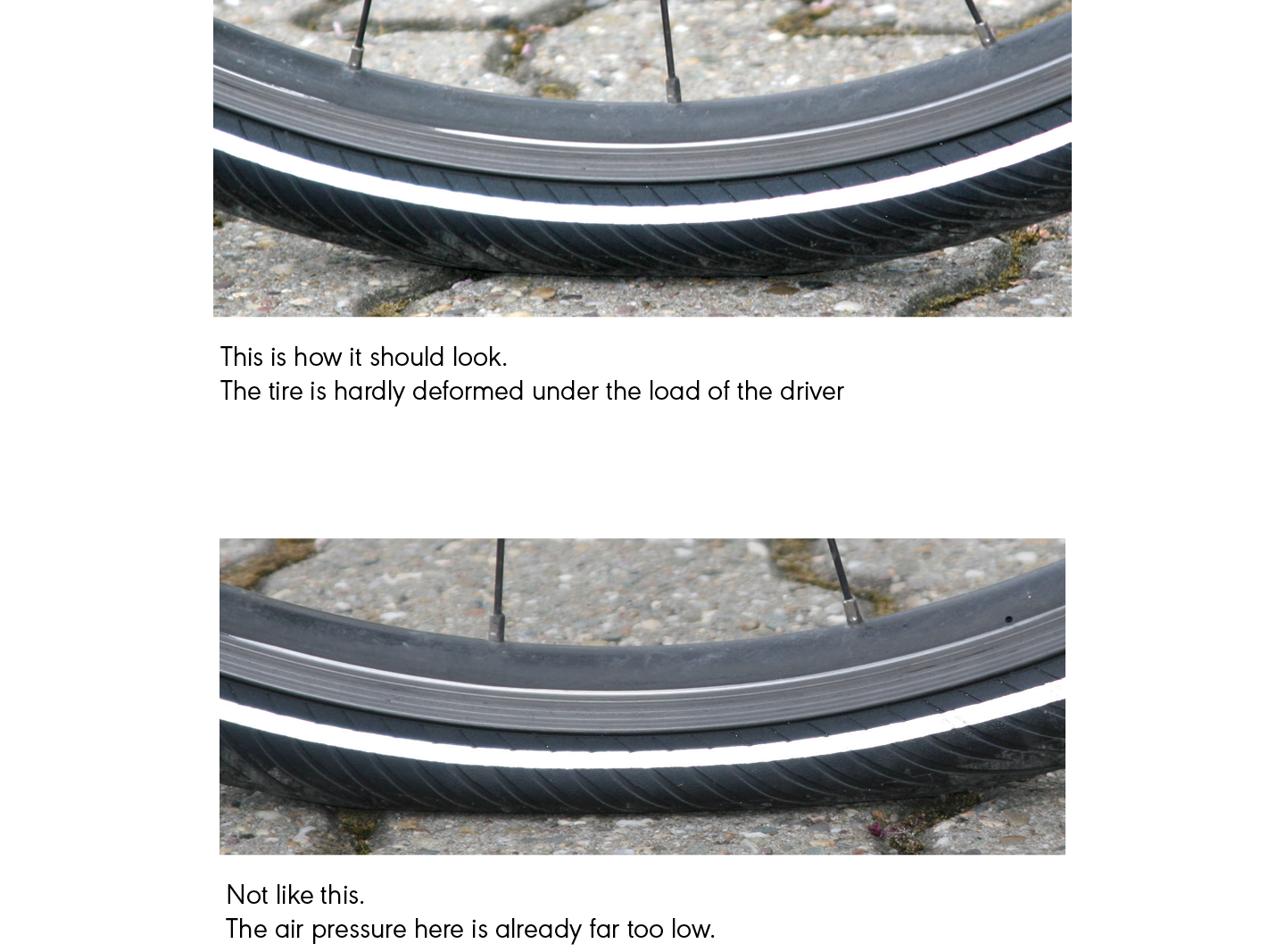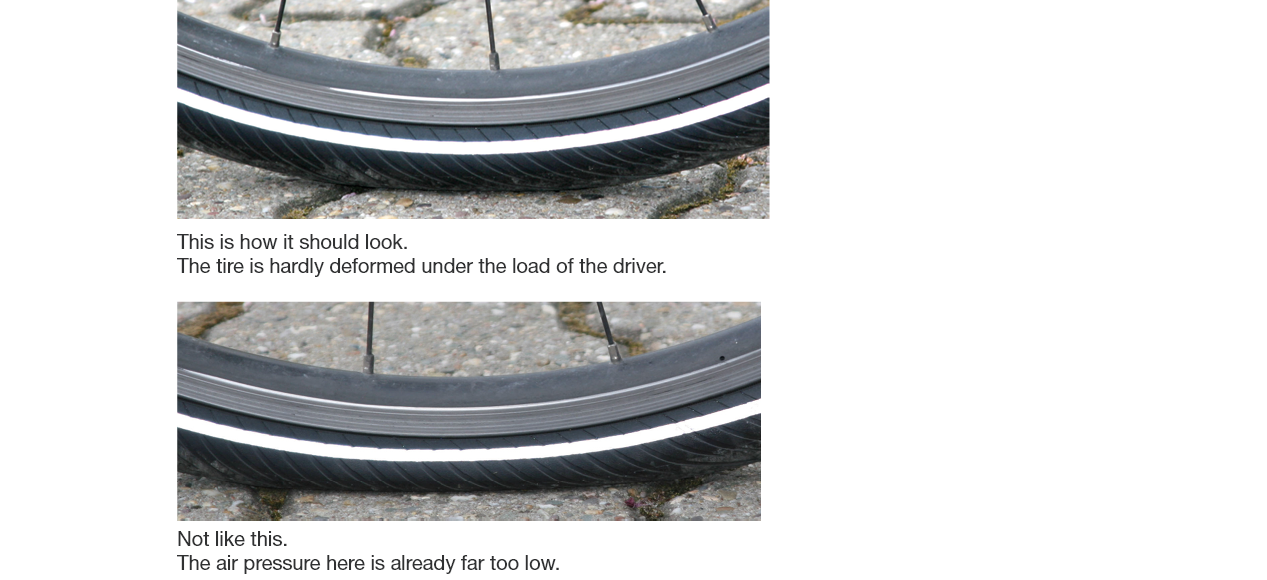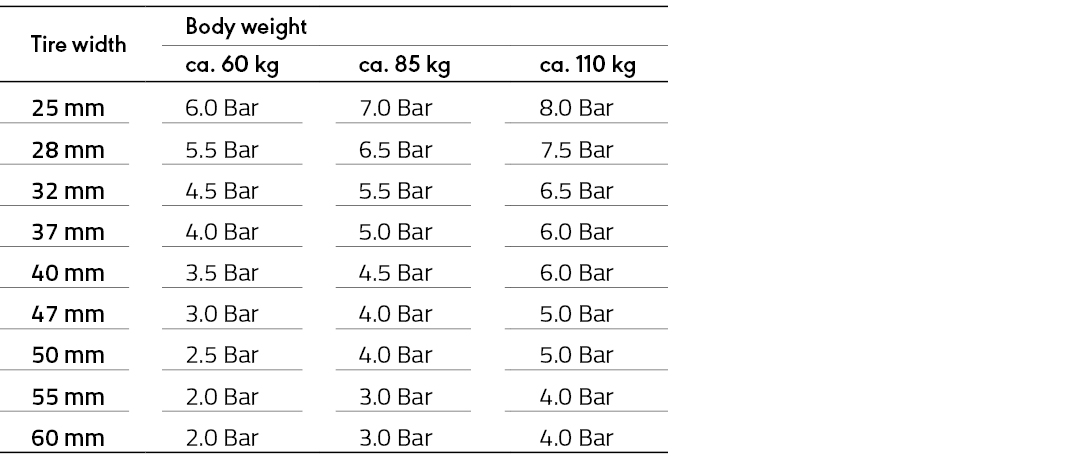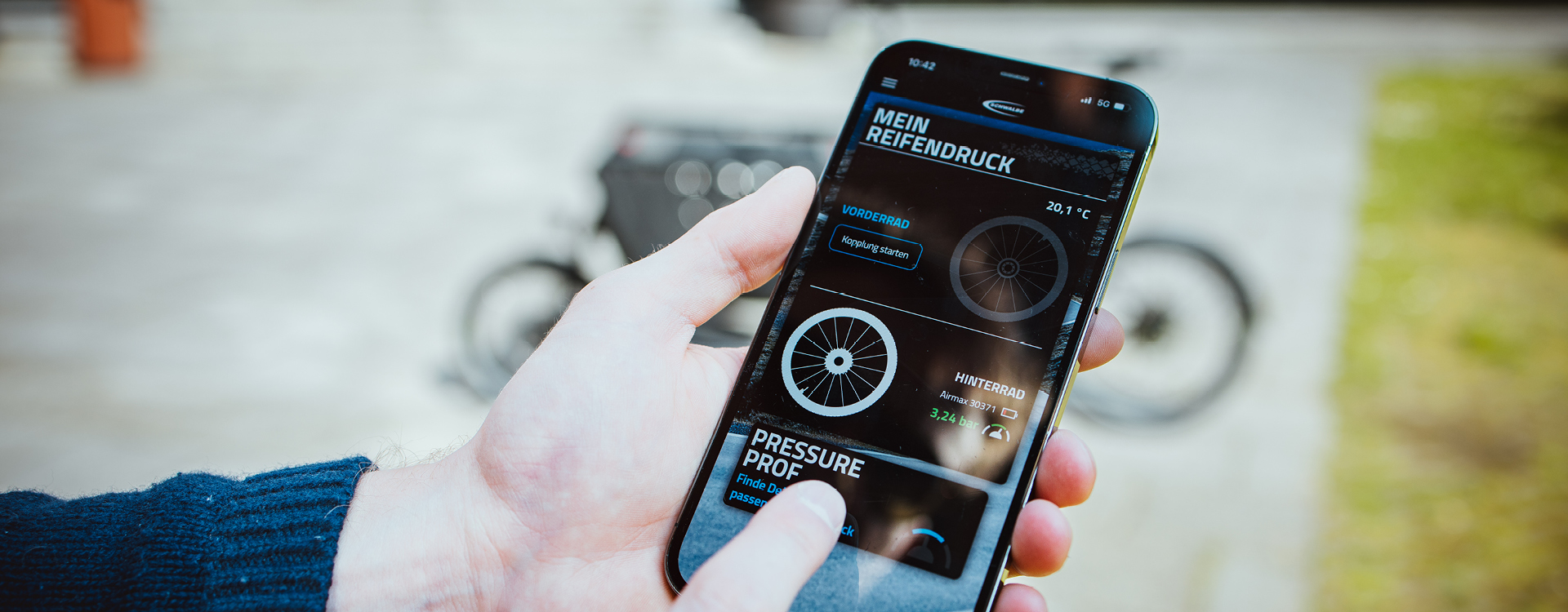Only with sufficient air pressure is the tire able to carry the bike. On the road, where the surface is very smooth, the higher the air pressure, the lower the rolling resistance of the tire. The susceptibility to punctures is also lower at high pressure. A permanently low air pressure often leads to premature tire wear. Cracking of the sidewall is the typical result. Abrasion is then also unnecessarily high.
On the other hand, a tire with low air pressure can absorb road shocks better. Wide tires are generally operated with a lower air pressure. They offer the possibility of using the advantages of lower air pressure without serious disadvantages in terms of rolling resistance, puncture protection and wear. Tubeless tires can also generally be ridden with a slightly lower air pressure.
HOW OFTEN SHOULD YOU CHECK THE AIR PRESSURE?
You should check and correct the air pressure at least once a month. Even the most airtight bicycle inner tubes lose pressure continuously because, in contrast to car tires, the air pressures in bicycle tires are much higher and the wall thicknesses much thinner. A pressure loss of 1 bar per month can be considered normal. The pressure loss is significantly faster at high pressures and significantly slower at low pressures.
When using latex tubes, you should check and adjust the air pressure before each ride. Use a pressure gauge to set the tire pressure. The widespread method of checking the pressure by pressing your thumb onto the tire is not very reliable, as all tires feel relatively hard and sufficiently inflated from approximately 2 bar of pressure. With the Marathon Plus tire model, the thumb test is completely inadequate due to the special puncture protection insert. Our Airmax Pro air pressure tester, for example, is suitable as a test device. With the right valve or a small adapter, you can easily check and adjust the air pressure. For all active cyclists, it is worth buying a floor pump with a pressure gauge.
WHAT IS THE RIGHT AIR PRESSURE FOR MY TIRE?
It is not possible to give a general air pressure recommendation for a specific bike or tire. The "correct" air pressure depends largely on the weight load on the tires. This is mainly determined by the weight of the rider and the luggage. In contrast to cars, the weight of the bicycle has only a minor influence on the total weight. In addition, personal preferences for low rolling resistance or high suspension comfort vary greatly. The permissible pressure range is indicated on the tire sidewall. The higher the air pressure, the lower the rolling resistance (on smooth road surfaces), wear and susceptibility to punctures. The lower the air pressure, the greater the comfort and grip of the tire. The following air pressure recommendations provide a rough guide for 3 different rider weights. The narrower the tire and the greater the total load, the higher the air pressure must be. Tires with a very small diameter (recumbent, folding bike) also require a higher pressure. Under no circumstances should you exceed or fall below the minimum and maximum pressure limits specified on the tire.
IMPORTANT! Please note the maximum air pressure recommendation for Schwalbe TLE/TLR tires on hookless rims.
FURTHER INFORMATION ON TUBELESS RIMS
THIS MAY ALSO BE OF INTEREST FOR YOU
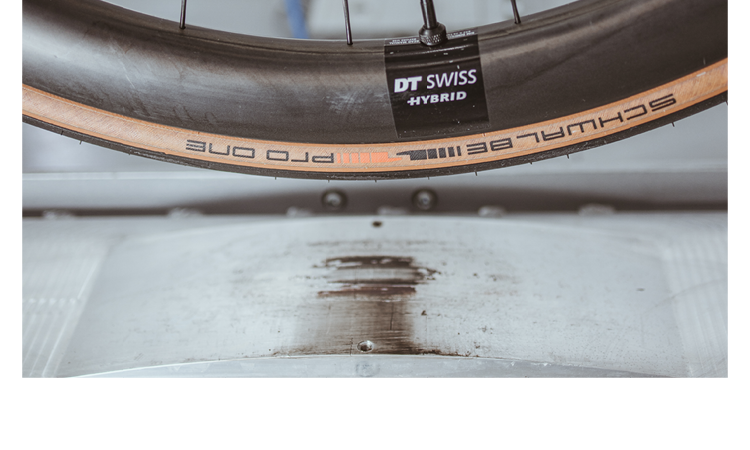
WHAT EXACTLY IS ROLLING RESISTANCE?
Learn all about the energy that is lost when the tire rolls and how you can minimize energy loss to improve your riding experience.
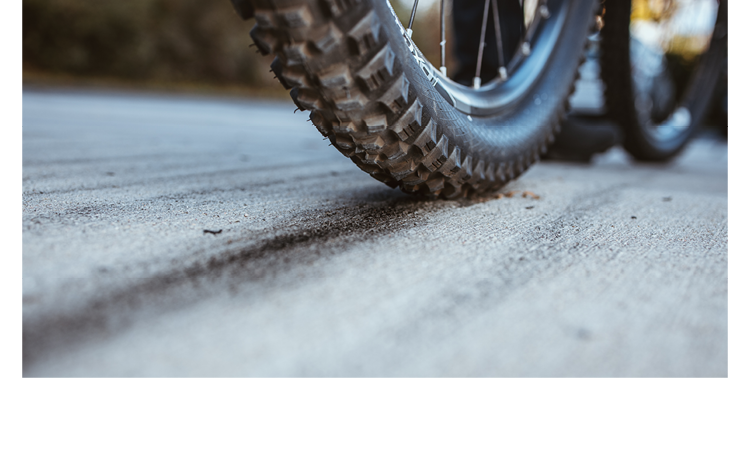
WHEN IS A TIRE WORN OUT?
No need to panic if your bike tire looks worn. But when is a tire really worn out? And are there any specific indicators? Find out more about the mileage of our Schwalbe tires and why some tires wear out prematurely. We also give you tips on storage.

